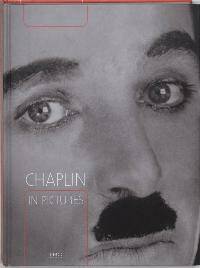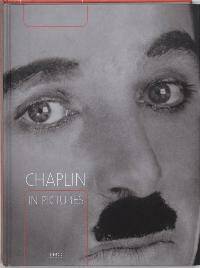
- Afhalen na 1 uur in een winkel met voorraad
- Gratis thuislevering in België vanaf € 30
- Ruim aanbod met 7 miljoen producten
- Afhalen na 1 uur in een winkel met voorraad
- Gratis thuislevering in België vanaf € 30
- Ruim aanbod met 7 miljoen producten
Zoeken


€ 49,00
+ 98 punten
Omschrijving
The Little Tramp image remains in constant use the world over, from America to Japan, as a symbol of the clash between man and machine, the confrontation with dictatorship and all the anachronistic grace of pantomime. This book, however, seeks to go beyond the conventional portrait by drawing on the Chaplin family archives and their wealth of largely unknown documentation.\nThere exists a mass of subsidiary material relating to Chaplin's films and life, and by tying this in with extracts on video we can actually show the artist at work. Where did the Little Tramp character come from? What kind of parts did he mostly play? What comedy situations recur from film to film? Beginning with the birth of the Little Tramp, the book shows then Chaplin as film director. While the Little Tramp is without doubt the 20th century's best-loved single character, it should not be forgotten that he was also an emblematic figure for the 1920s avant-garde. The press coverage of the time points up this dual success, as does the work of artists as different as Fernand L?ger, Rudolf Ausleger or Erwin Blumenfeld. \nBorn into the poverty of working-class London, Chaplin conquered America as it was becoming the most powerful nation in the world: how to explain this daydream come true? The book closes with the end of the artistic growing-up period, the moment when the Little Tramp becomes an adult: confronted with Hitler, Chaplin set out to replace the dictator with a Jewish barber
Specificaties
Betrokkenen
- Auteur(s):
- Uitgeverij:
Inhoud
- Aantal bladzijden:
- 234
- Taal:
- Engels
Eigenschappen
- Productcode (EAN):
- 9782913986039
- Verschijningsdatum:
- 20/06/2005
- Uitvoering:
- Hardcover
- Afmetingen:
- 220 mm x 290 mm
- Gewicht:
- 1538 g

Alleen bij Standaard Boekhandel
+ 98 punten op je klantenkaart van Standaard Boekhandel
Beoordelingen
We publiceren alleen reviews die voldoen aan de voorwaarden voor reviews. Bekijk onze voorwaarden voor reviews.









